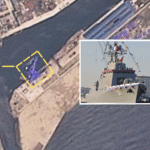(CTN News) – This month, the national railway of Thailand initiated a new passenger service to Laos, which is the most recent advancement in the expanding Southeast Asian rail network.
The objective is to increase cross-border commerce in products and individuals with China.
The State Railway of Thailand (SRT) inaugurated the new line that connects Bangkok to Ventiane on Friday evening. The distance between the two cities is roughly 650 kilometers, and the journey takes 12 hours when cross-border customs formalities are considered.
The Bangkok-Vientiane railway operates a single daily service that offers three distinct seating classes. A one-way ticket is priced between 281 and 874 baht ($8 and $24).
On Friday, the train departing from Bangkok’s Krung Thep Aphiwat Central Station contained approximately 270 seats, all of which were reserved. Three companions who had organized a two-day excursion to Vientiane for sightseeing were among the passengers.
One of the three was a sixty-four-year-old homemaker from Bangkok. “I anticipate that my initial visit to Laos will be enjoyable,” she stated.
Additionally, SRT anticipates an increase in the demand for travel in China. Khamsavath Station, the final railway station in Laos, is situated approximately 10 kilometers from Vientiane Station, the site of the recently established high-speed link to Kunming, southern China.
According to officials, the new route will simplify the process of transporting Chinese travelers from Laos to the capital of Thailand.
In an endeavor to entice Chinese tourists, the Thai government advertises its own products. The event, which took place in Bangkok over the first two days of July, was attended by approximately 200 individuals.
The majority of whom were from the Railway Chinese travel industry.
Mistine, a Thai cosmetics brand, was among the items that were displayed at the event. Chinese media has reported that Thai tourism authorities have collaborated with a Chinese supermarket chain to organize a promotional event in Shanghai to publicize Thai-grown produce.
Additionally, Thailand is in the process of constructing a network of freight railroads that will connect to China. Both a cargo route between the Chinese city of Chengdu and the province of Rayong in Thailand, as well as a line between Bangkok and Chongqing in China, commenced operations in December of last year.
The Laos-China railway is rapidly becoming a significant freight route between China and Southeast Asia, and both freight lines utilize it.
According to a March estimate by the private Kasikorn Research Center, the value of Thai commodities that are transported to China via neighboring countries is expected to rise by 17% this year, reaching 250 billion baht ($6.88 billion).
According to a Kasikorn analysis, “Logistics via the China-Laos high-speed railway will play a greater role in cross-border and transit trade.” At present, the majority of the freight will be composed of durian fruit and other agricultural products; however, there is potential for an increase in the export of manufactured goods.
The ASEAN Express freight train service was initiated in Malaysia late last month. The transnational line commences in the Malaysian state of Selangor, which is situated in close proximity to Kuala Lumpur. It subsequently travels through Thailand and Laos before reaching Chongqing.
The ASEAN Express journey is estimated to take approximately nine days, which is considerably shorter than the two to three weeks required by sea, according to Keretapi Tanah Melayu Berhad (KTMB), Malaysia’s national rail operator.
The initial train, which contained agricultural products and other cargo, departed Malaysia on June 27. The shipment of fresh durian from Malaysia had been authorized by the Chinese authorities earlier in the month. Farmers who cultivate durian anticipate an increase in exports to China.
Initially, the ASEAN Express will operate twice a week; however, it plans to transition to daily operations.
According to KTMB, the railway will “strengthen trade relations.”
Drive economic growth, and facilitate the movement of goods” between ASEAN member nations in a press statement.
Ichiro Kakizaki, a professor of Southeast Asian studies at Yokohama City University in Japan, believes that there is a “need to ascertain the extent of demand for the foreseeable future” in relation to the ASEAN Express. Nevertheless, Kakizaki suggests that the railway’s performance as a viable alternative to maritime routes could lead to “a reorganization of the supply chain.”
The Laos-China railway was a significant project in Beijing’s Belt and Road Initiative, and it was operationalized in December 2021. The objective is to establish a pan-Asian rail network by constructing a series of extensions from the existing route.
Nevertheless, there are apprehensions regarding China’s leadership in the development of an extensive rail network.
A representative of a Japanese logistics company with headquarters in Vientiane stated, “Foreign companies will be unable to profit if China seizes control of rail operations.”
China is responsible for approximately 50% of Laos’s estimated 80% external public debt. The debt is analogous to the gross domestic product of the nation. Laos may become ensnared in a “debt trap” if it fails to repay its obligations. In such an event, China would assume control of all of Laos’ infrastructure, including the rail network.
Train companies in Thailand and Malaysia are responsible for the operation of rail connections between their respective nations and Laos. Nevertheless, the anticipated advantages of the connections to the Laos-China railway are subject to the danger of Beijing’s growing influence.
SOURCE: NA
SEE ALSO:
Heavy Rain is Forecast for Mumbai Over the next 5 Days; An Alert has been issued.














